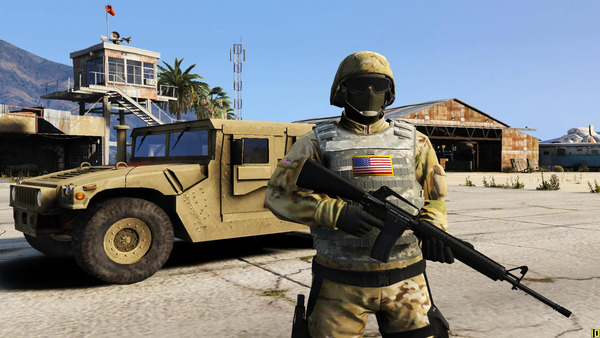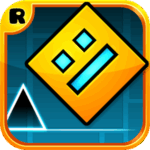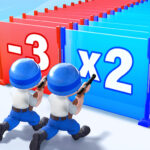Popular Now
Delta Force, developed by NovaLogic, is a tactical first-person shooter that emphasizes realism, large open maps, and military precision. Unlike most modern shooters that focus on fast-paced action, Delta Force challenges players with long-distance combat, squad tactics, and strategic planning. This guide is designed for players of all experience levels who want to learn how to approach the game effectively, from setup to advanced battlefield maneuvers. Whether you're a rookie enlisting for the first time or a returning veteran seeking tactical perfection, this comprehensive walkthrough will help you dominate every mission.
1. Installing and Configuring Delta Force

Downloading the Game
To begin, make sure you obtain a legal copy of Delta Force. You can purchase it from platforms like GOG or Steam, or find a physical CD version if you prefer retro authenticity. Once you install the game, make sure your PC meets the requirements. Luckily, Delta Force is lightweight and compatible with most systems—even older ones.
Configuration and Game Settings
After launching the game, go into the settings menu to optimize your experience. Adjust the display resolution, sound volume, and most importantly, mouse sensitivity. Delta Force relies heavily on precision aiming, so this is critical. You might also need to run the game in compatibility mode for modern versions of Windows. Save your settings and test them during a training mission before jumping into a real operation.
2. Learning the Game Interface and Mechanics
Understanding the HUD and Basic Controls
The Heads-Up Display (HUD) shows mission objectives, compass direction, health, ammo, and your minimap. Getting familiar with these indicators early on will help you make faster decisions in the field. Controls are mostly intuitive, but you can rebind them to fit your style.
Essential Controls to Master
-
WASD for movement
-
Spacebar to jump
-
C to crouch
-
X to go prone
-
Left-click to shoot
-
Right-click to aim with scope
Being quick with crouching, going prone, and switching weapons can mean the difference between life and death during a mission.
3. Choosing the Right Loadout for the Mission
Selecting Loadouts Based on Objectives
Before each mission begins, you’ll be asked to choose a loadout. Read the mission briefing carefully. For stealth operations, a suppressed weapon like the MP5 or SD M4 is ideal. For open combat, go with a scoped rifle like the M4 or even a sniper rifle like the Barrett.
Types of Weapons and Gear
-
Assault Rifles: Balanced for all situations
-
Sniper Rifles: Ideal for long-distance precision
-
Submachine Guns: Best for stealth and mobility
-
Explosives: For demolition tasks or traps
-
Medkits and Extra Ammo: Always carry at least one of each
Don't just pick your favorite gun—pick the one that fits the mission ahead.
4. Starting Your First Mission

Mission Briefing and Strategic Planning
Take time to study the mission briefing screen. It will outline your objectives, the terrain type, enemy forces, and sometimes weather conditions. Use the map to choose a safe infiltration path. Look for elevated terrain for sniping or forests for stealth.
Inserting Into the Battlefield
Most missions begin with a helicopter drop or truck insertion. During this phase, stay alert and get your bearings immediately upon landing. Don’t rush in—scan the area with your scope and identify enemy patrols before making any moves.
5. Using Terrain and Cover to Your Advantage
Terrain Awareness
The environments in Delta Force are vast and varied. You’ll encounter deserts, mountains, forests, and even snowfields. Each terrain requires different strategies. For example, in open deserts, keep low and use hills for cover. In forests, move quietly and stay hidden among trees.
Cover and Movement Tips
-
Use natural cover like rocks, dunes, and tree trunks
-
Lie prone in grass to stay undetected
-
Use ridgelines to stay hidden while advancing
-
Avoid silhouetting yourself against the sky when moving along hills
Mastering terrain use is critical to avoiding detection and surviving longer missions.
6. Combat Tactics: Engagements and Efficiency
Short-Range vs Long-Range Combat
In close combat, mobility is key. Use crouch and strafe movements with weapons like the MP5 or shotgun. For long-range battles, use your scope, hold your breath for better accuracy, and aim for the head.

Engagement Strategy
-
Suppress enemies with automatic fire
-
Flank enemy positions whenever possible
-
Use grenades to clear bunkers or dense enemy groups
-
Conserve ammo—every bullet counts
A planned attack almost always beats rushing into enemy territory.
7. Managing Your Squad and Giving Commands
Issuing Orders to AI Teammates
Delta Force includes basic but useful squad command mechanics. You can direct teammates to hold position, advance, or engage specific targets. Use these options wisely when storming enemy camps or setting up ambushes.
Squad Role Breakdown
-
Rifleman: Balanced attack and defense
-
Support Gunner: Lays down suppressing fire
-
Sniper: Provides overwatch from distance
-
Demolition: Destroys enemy vehicles or bunkers
Knowing how to position and support your squad can turn the tide of a mission.
8. Completing Mission Objectives Efficiently
Types of Objectives and How to Tackle Them
Common mission goals include assassinating high-value targets, retrieving intel, demolishing enemy infrastructure, or rescuing hostages. Each requires a different approach.
Tips for Each Mission Type
-
For assassinations: Use long-range tactics and retreat immediately
-
For demolitions: Clear the area before planting explosives
-
For rescues: Stealth is preferred, and speed is essential once discovered
-
For recon: Avoid combat if possible—stay low and scan with your scope
Stay focused on your mission objective; don’t get distracted by unnecessary combat.
9. Multiplayer Strategy and Team Coordination
Communicating with Your Team
Multiplayer in Delta Force is all about coordination. Use in-game chat or voice if supported. Always notify teammates about enemy positions and work together to cover angles.
Best Multiplayer Roles
-
Sniper: Eliminates threats from afar
-
Scout: Moves ahead to mark enemy locations
-
Support: Carries heavy weapons and provides suppressive fire
-
Objective Carrier: Handles flags or bombs in objective-based games
Different multiplayer modes such as Team Deathmatch, Capture the Flag, or King of the Hill require different approaches. Adapt to your team’s needs.
10. Advanced Tips, Mods, and Extending Game Life
Using Mods and Custom Content

Thanks to an active modding community, Delta Force has many fan-made expansions, texture packs, and mission scenarios. These can refresh your experience and even allow co-op play with customized objectives.
Replaying Missions for Mastery
Revisit completed missions with new tactics. Try stealth-only runs, speed runs, or challenges like completing a mission without taking damage. You can also use the mission editor to create your own campaigns.
Taking advantage of these extra tools can keep Delta Force engaging long after you’ve finished the base game.
Conclusion
Delta Force stands apart as a tactical, methodical shooter where patience, strategy, and precision matter more than speed. By understanding the mechanics, learning how to use the terrain, choosing the right weapons, managing your squad, and thinking ahead, you'll quickly become a master operator. Each mission is a puzzle, and with the right tools and mindset, every objective becomes achievable.
Whether you’re tackling solo campaigns or teaming up online, Delta Force rewards calculated decisions over brute force. Keep practicing, experiment with different play styles, and most importantly—think like a soldier, not just a shooter.
















